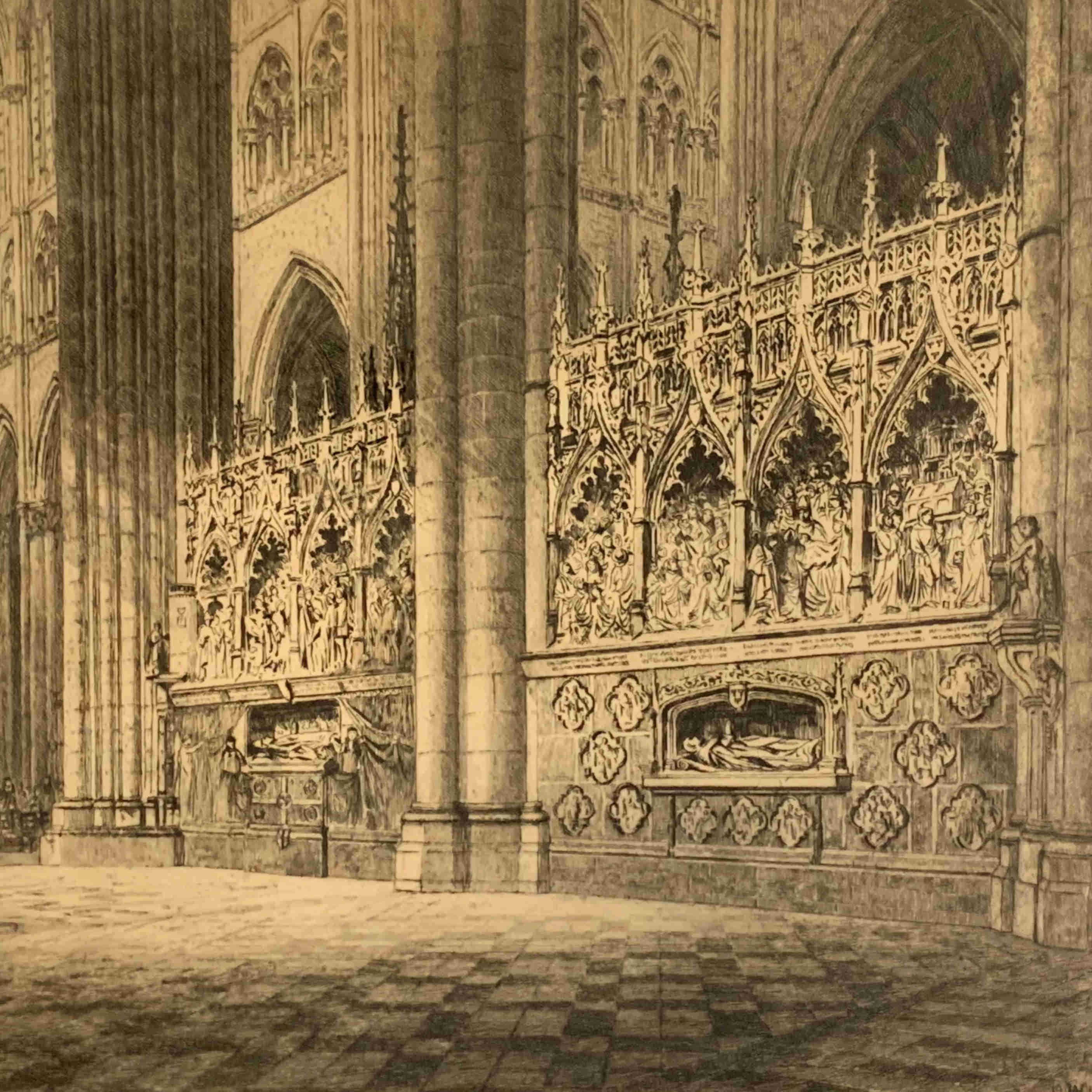Axel Herman Haig (Hägg) studied drawing and watercolor painting with Per Magnus Arvid Säve but apprenticed as a shipbuilder at a government dockyard. In 1859, though, he undertook a new apprenticeship as a draftsman in the offices of the Ecclesiastical Commissioners. After seven years there, he launched himself as an architectural artist.
The mid-nineteenth century was an extraordinary time for printmakers because of the growth of the printed word and the increase in privately-held wealth. This was particularly true as to architectural prints; the new wealth required new buildings. In 1866, Haig was employed by architect and designer William Burges to illustrate his designs for the Royal Courts of Justice in The Strand. The watercolors that Haig created were “an immediate sensation.” Haig and Burges continued to work together until Burges’ death in 1881.
Haig developed a second career as an etcher. His lithographs of European castles, palaces, landscapes, and cathedrals became hugely popular in late-Victorian England. In a review of his work published by RIBA in the year of his death, Maurice Adams wrote:
“his architectural draughtsmanship ranks without a doubt amongst the foremost of his time and his graphic capability remains unique.”
Haig’s work is found in important public and private collections world-wide, including the British Museum, numerous works at the Art Institute of Chicago and extensive collection of his work at the Yale University Art Gallery.
